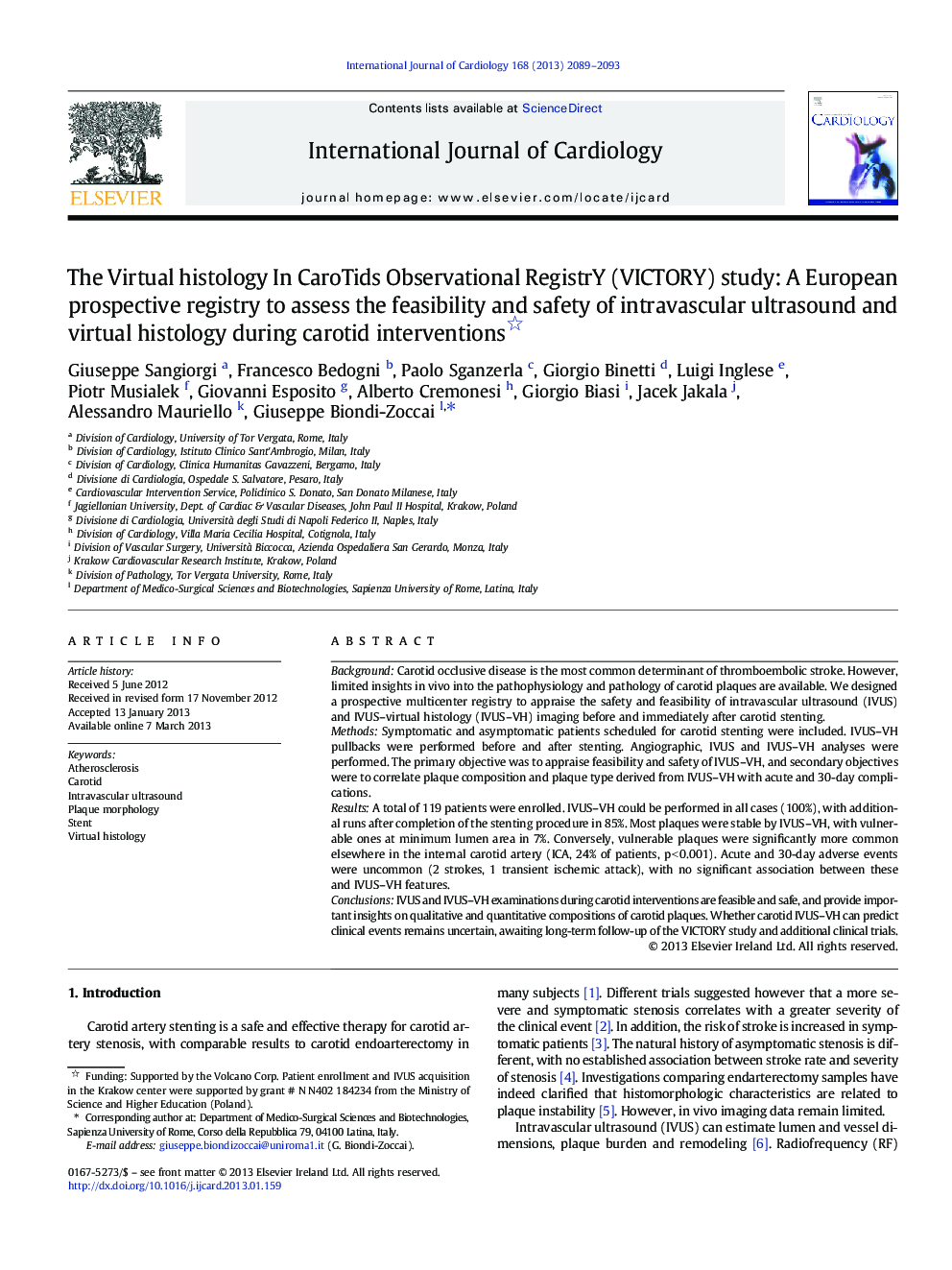| Article ID | Journal | Published Year | Pages | File Type |
|---|---|---|---|---|
| 5976206 | International Journal of Cardiology | 2013 | 5 Pages |
BackgroundCarotid occlusive disease is the most common determinant of thromboembolic stroke. However, limited insights in vivo into the pathophysiology and pathology of carotid plaques are available. We designed a prospective multicenter registry to appraise the safety and feasibility of intravascular ultrasound (IVUS) and IVUS-virtual histology (IVUS-VH) imaging before and immediately after carotid stenting.MethodsSymptomatic and asymptomatic patients scheduled for carotid stenting were included. IVUS-VH pullbacks were performed before and after stenting. Angiographic, IVUS and IVUS-VH analyses were performed. The primary objective was to appraise feasibility and safety of IVUS-VH, and secondary objectives were to correlate plaque composition and plaque type derived from IVUS-VH with acute and 30-day complications.ResultsA total of 119 patients were enrolled. IVUS-VH could be performed in all cases (100%), with additional runs after completion of the stenting procedure in 85%. Most plaques were stable by IVUS-VH, with vulnerable ones at minimum lumen area in 7%. Conversely, vulnerable plaques were significantly more common elsewhere in the internal carotid artery (ICA, 24% of patients, p < 0.001). Acute and 30-day adverse events were uncommon (2 strokes, 1 transient ischemic attack), with no significant association between these and IVUS-VH features.ConclusionsIVUS and IVUS-VH examinations during carotid interventions are feasible and safe, and provide important insights on qualitative and quantitative compositions of carotid plaques. Whether carotid IVUS-VH can predict clinical events remains uncertain, awaiting long-term follow-up of the VICTORY study and additional clinical trials.
